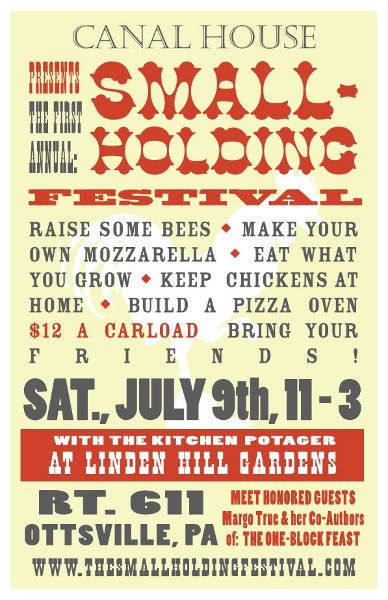
Saturday, 9 July 2011
Smallholding Day at Linden Hill
There's a lot going on at Linden Hill Gardens at 8230 Easton Road (Route 611) in Ottsville, Pennsylvania. There are display gardens and plants for sale. Every Friday from 4:00 to 8:00 p.m., from end of April through mid-October (in October the hours are 3:00 to 6:30 p.m.) there's the Ottsville Farmers Market. And today was their first annual Smallholding Festival. Smallholding? What's that?

To quote: "A smallholding offers its owners the pleasure of backyard self-sufficiency through the raising of animals and the growing of fruits and vegetables. The smallholding festival will be a day of learning devoted to becoming self-sufficient in your own backyard, garden, and kitchen."
Yesterday it poured. We don't seem to get gentle overnight slow-soaking rains any more. More like open the taps and shelter from a deluge, half an inch or more in less than half an hour. But this morning dawned clear and fine. Lower humidity and the occasional breeze. Yes, yes, yes! By now I know my way around, avoiding the Geigle Hill Bridge that closed in 2002 - is it really 8 years now?
.
 . . . . .
. . . . . 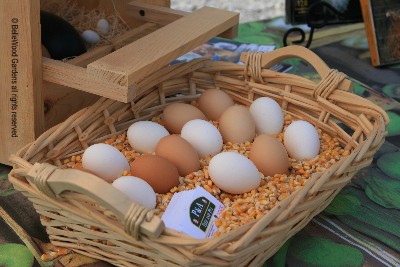
Chickens are doubtless the best backyard livestock for the novice. Easy care, delicious eggs and
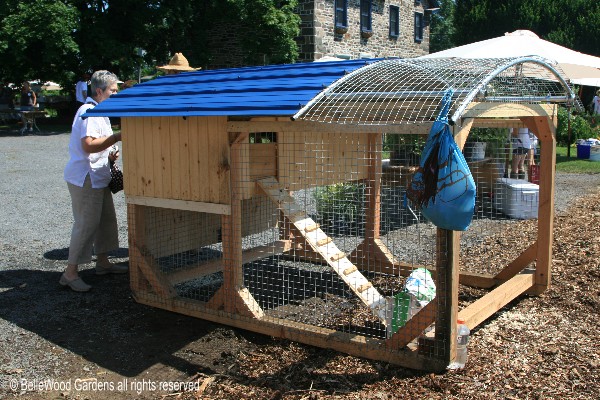
a modest investment will get you started. A coop to house them, with
a run so they can, well, run around. Safely. And various accoutrements
to offer feed and provide water, a nighttime fox alarm, books to read.

.
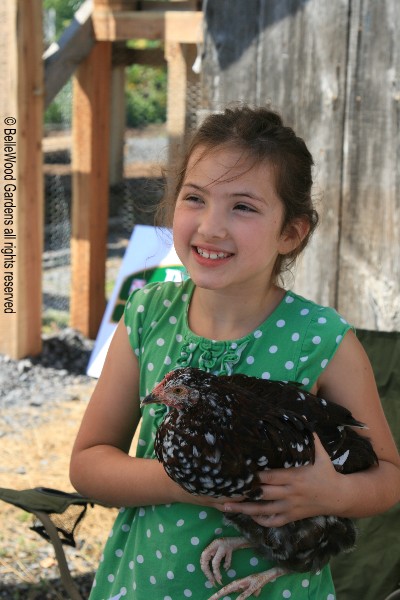
Clearly, children enjoy chickens, as shown by this child and her speckled Sussex hen.
Then I walked over to the other end of the field to see the hoofed stock.

Mountain Pride Farm was there with two of her angora goats. This doe is magnificent. Angoras
need to be sheared at least once, preferably twice a year. Their owner sends their fleece away
to be washed and combed into roving, which she then spins herself. She brought samples of
fleece, roving, spun yarn, and felt, all made from the fleece of her own flock of angora goats.
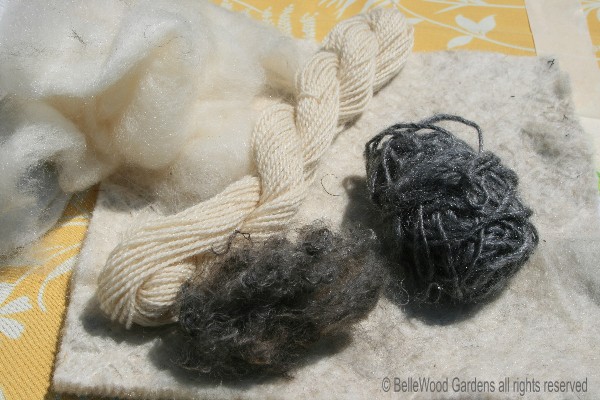
.
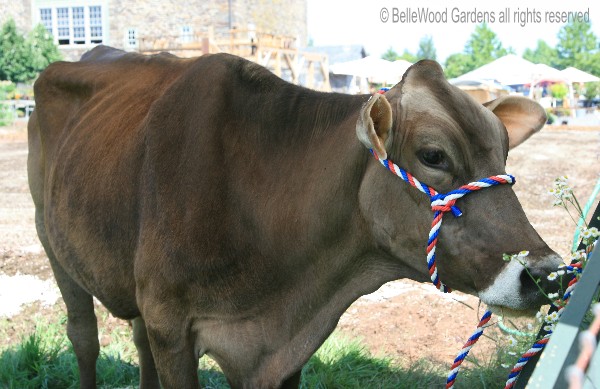
Nearby was this beautiful, sweet natured, well behaved 4 year old cow named Lady Monique, or
Nikki, for short. I think she's a Brown Swiss. She's part of the herd at Bluebell Meadows Dairy Farm.
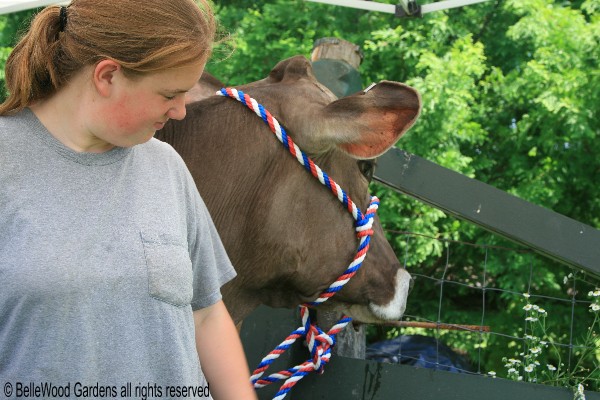
So placid is she, that Art was letting people try to milk her, adults and children alike. "Hold the teat
up near the udder. Close your thumb on one side. Grasp with your other fingers and trap the milk.
Then squeeze downward . . . . " And out comes milk. Some folks let it squirt on the ground while
others would cup their other hand to catch the milk, then drink. Ever calm, Nikki just stood there.

.
After milk comes cheese. "Just ask me about fromaggio" declares Lorenzo's button. And for sure
the crowd was fascinated by his calm, easy style as he turned huge blocks of ricotta into mozzarella.
This is his heritage. Lorenzo's "day job" somehow involves 1821 Steaks and Cocktails restaurant.
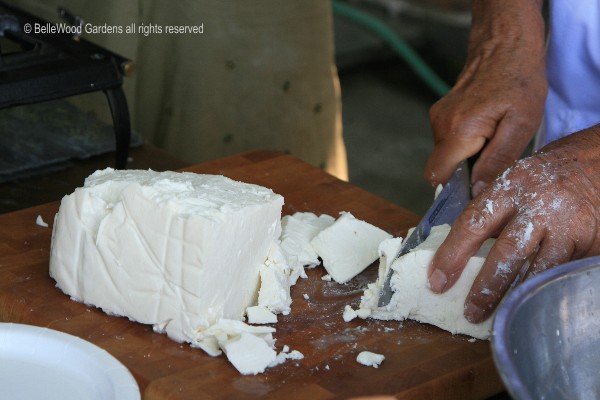
First the ricotta is sliced into smallish cubes which are placed in a large stainless steel bowl.
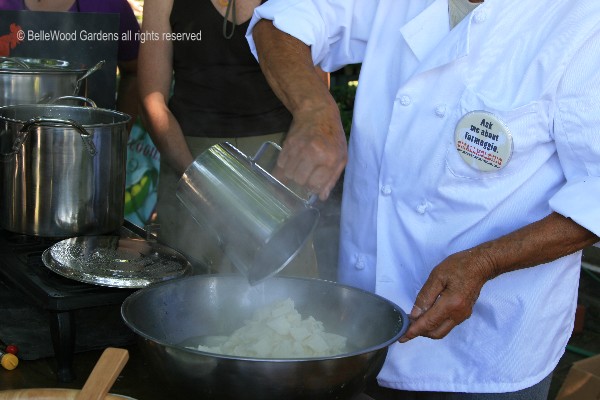
Next about a gallon of water at 175° Fahrenheit is poured over the cubes to heat them up. After
just a few minutes Lorenzo begins to manipulate and stretch the cheese, telling us that really
"It's all in the fingers." The longer the pulling, the better the texture. When the water cools it is
poured off and replaced with more hot water. Lift and pull. Fold. Stretch. Again. No rush.
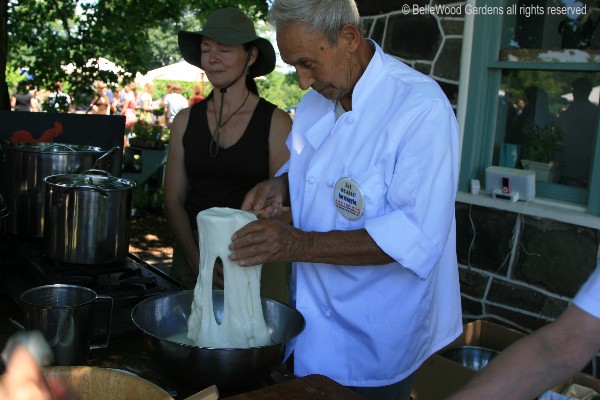
And when his experience tells him the mozzarella is ready, Lorenzo begins to shape it, squeezing off
a portion and then gently shaping it into a ball. After which it is dropped into a basin of salted water.
The cheese can sit for just a few minutes, or up to 2 weeks. A longer immersion means it keeps longer.
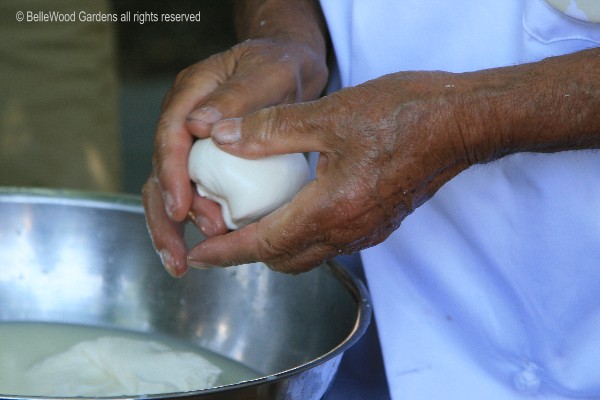

And it's cheese! Sliced up and samples passed around everyone enjoys a taste.
Mozzarella is used for pizza . .. .
 . . . . .
. . . . .
This way, indicates the sign, for pizza from a wood burning oven.
That way, for building an earthen oven. Pizza first, I decide.

The igloo-shaped structure is fired up and ready for use.
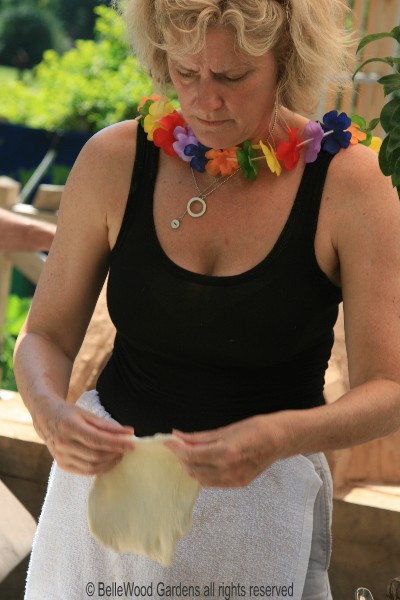
Small portions of dough are flattened, lifted, patted, shaped.
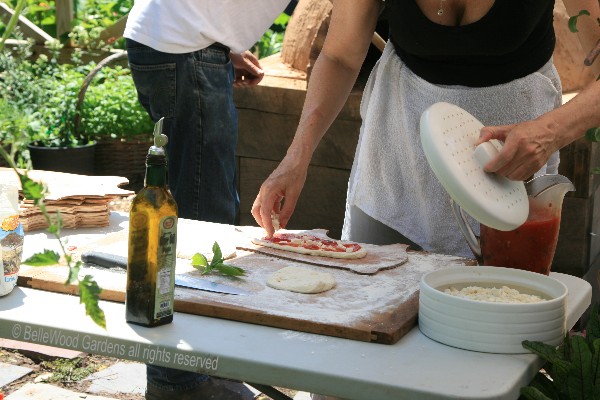
Drizzled with a little olive oil, spread with tomato sauce, sprinkled with mozzarella and a little torn basil.
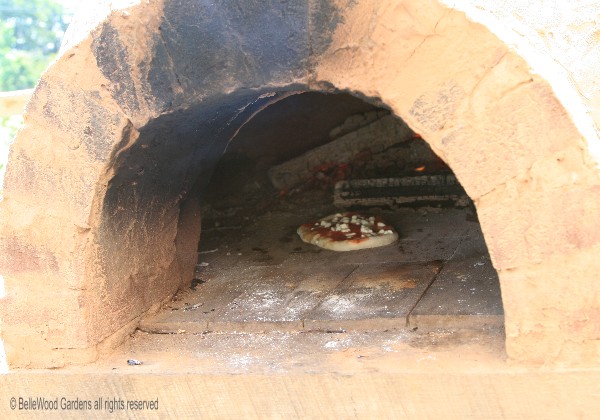
Into the oven. It cooks quite quickly. As I inhale the savory aroma the two presenters slice it up
and offer samples while the next little pizza is baking. If it were bread there'd be a board closing
off the door. And the wood / coals / ashes just barely visible at the back would all be swept out.
Now to see how an earthen oven is built. As an aside - I think John makes earthen ovens
as a hobby, since his business is developing brands for some very familiar companies.

It begins with a form covered with wet newspaper. (That's the pizza oven in back.)
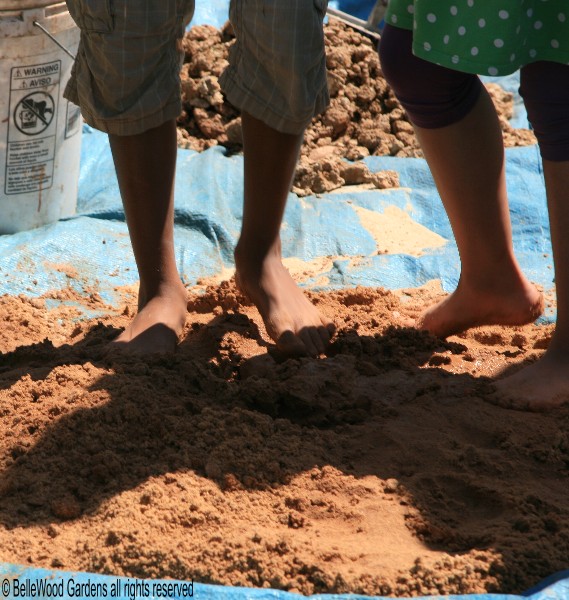
The innermost layer is made of sand and clay. John digs the clay in his backyard. Some passing boys
a quite willing to help stomp / knead / dance / work the clay / sand mixture to an even consistency.
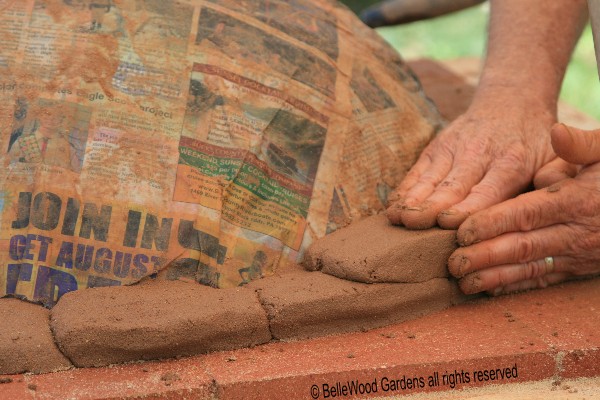
Brick-like lumps are built up one by one. There will be a second, core layer of clay and sawdust
that will in turn be covered by a third layer, again of clay and sand. The opening will be cut before
the clay layers completely dry out, as will the air vent. This thing is massive and substantial.
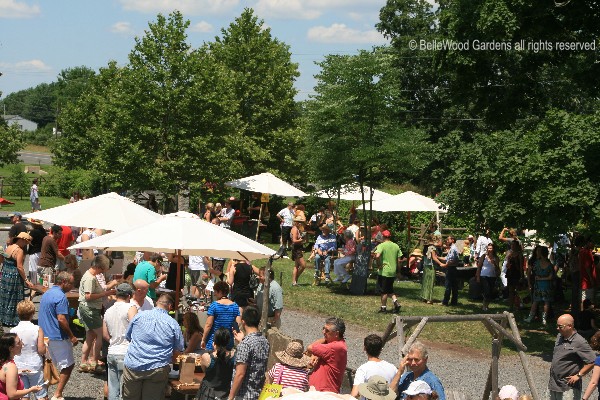
The crowd swirls and eddies. Bring a car full of people for $12. Bring a friend. People did. They also
brought family, from babes in arm to granny. Children and teenagers. Puppy dogs and hounds. Everyone
is having an absolutely splendid time, presenters, musicians, and visitors alike. My kind of thing.
Many, many years ago I kept chickens. In fact, this past March I taught a class on backyard chickens at the New York Botanical Gardens. Back when we lived in Connecticut I was the coordinator of a two acre community garden. I've taught classes and written a book on making preserves.
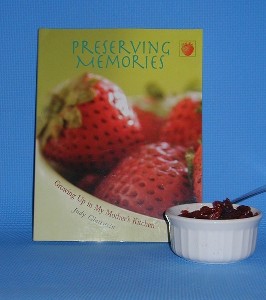
Clearly, I fit right in.
And there's more to share with you. Wait for the next installment of Smallholding Day at Linden Hill.